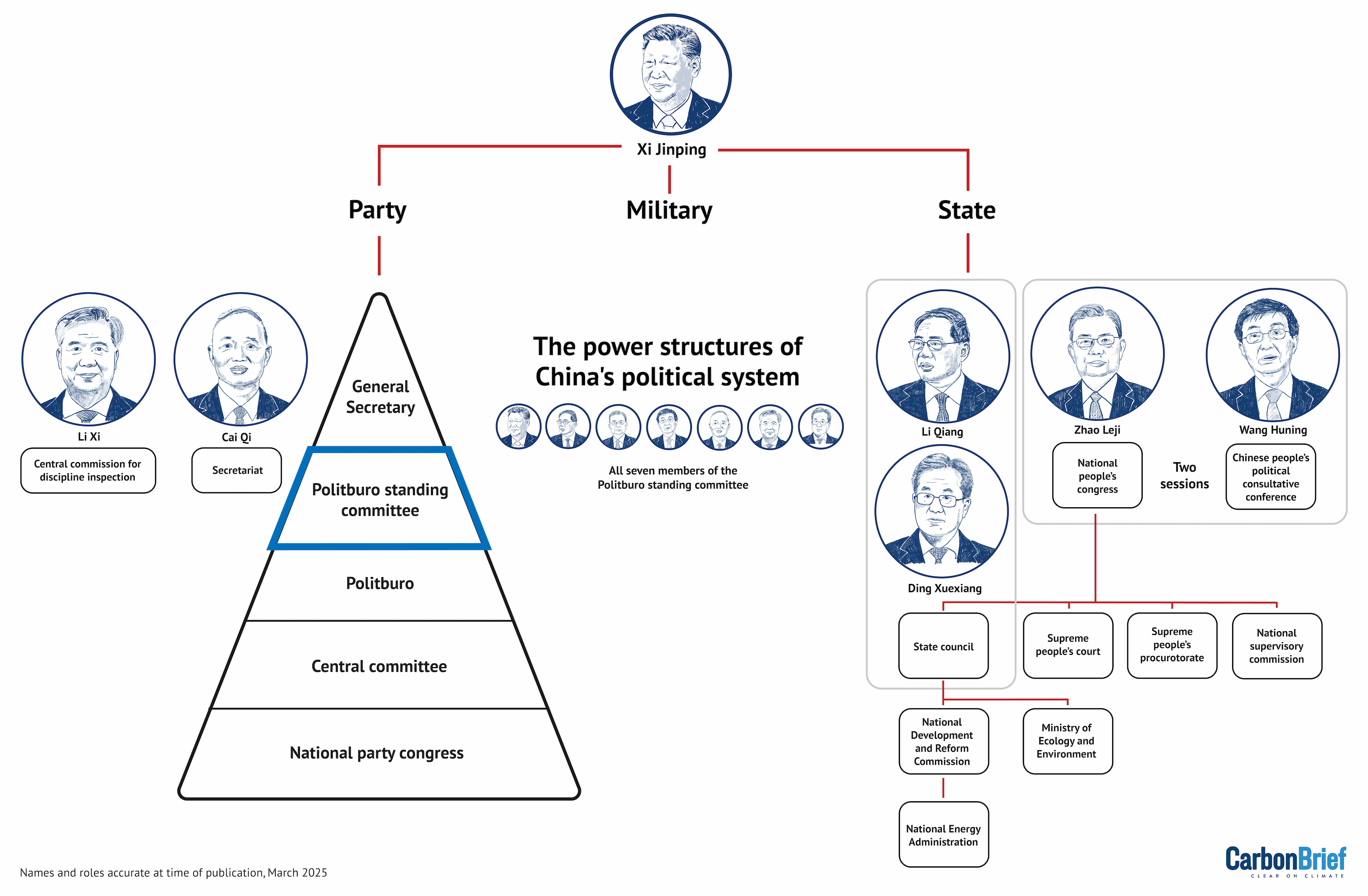China’s political hierarchy
China is ruled by the Communist party, which also controls the state and the military. The ruling party’s head, the “general secretary”, is invariably endorsed as the president of the country by the National People’s Congress (NPC), China’s equivalent of a parliament.
The majority of NPC delegates are from the Communist party, making it a “rubberstamp parliament”. The NPC and the Chinese People’s Political Consultative Conference, hold China’s most important annual political meetings, known as the “two sessions”.
Since 2013, Xi Jinping has been the head of the Communist party and the head of state. He also assumed the highest commanding power of the military in 2016, giving him broader powers than his predecessors.
Communist party leaders, collectively elected at the National Party Congress of the Communist party, are commonly seen as being in charge of the state. For example, the Communist party’s second most powerful leader, Li Qiang, is the head of the State Council, China’s central government.
Only a limited number of non-Communist party members have ever taken high positions in the state. One example is Huang Runqiu, who has been the minister of the Ministry of Ecology and Environment since 2020. Huang is a member of the Jiusan Society – a minor political grouping – and as of early 2025 was the only minister that is not from the Communist party.
China’s political hierarchy is shown in the graphic below. The most powerful group is the Politburo Standing Committee, highlighted in blue, which has seven members during its current term (2022-2027).
